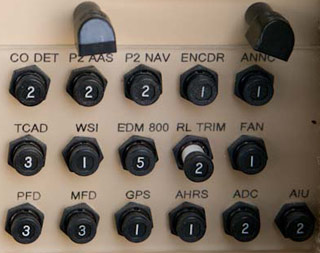I recently introduced someone new to general aviation. And, as is often the case, the conversation started around airplane ownership. It came as no surprise that the person was shocked by the age of my own airplane. It’s a 1975 model, which in airplane years, is still in its youth by my standards.
 So, I explained how airplanes stay “young” because ownership is a constant process of progressive-rejuvenation. Every 2,000 hours or so, the engine and all its supporting parts get overhauled or replaced. Over time, paint and interiors get updated, avionics get replaced, and every component is checked during the annual inspection and replaced as necessary. It’s a perpetual fountain of youth for well-maintained aircraft.
So, I explained how airplanes stay “young” because ownership is a constant process of progressive-rejuvenation. Every 2,000 hours or so, the engine and all its supporting parts get overhauled or replaced. Over time, paint and interiors get updated, avionics get replaced, and every component is checked during the annual inspection and replaced as necessary. It’s a perpetual fountain of youth for well-maintained aircraft.
I actually started to drink my own Kool-Aid on this theory until the electrical system gremlins started to appear. First it was autopilot trim problems and then the angle-of-attack indicator got moody about when it wanted to work. After a thorough investigation, I discovered that my circuit breakers were failing one by one. In one case, the connector on the back failed mechanically. In another case, internal resistance was causing current loss for the trim system. And, finally, that pesky AOA indictor got forgiven for being temperamental when it was discovered that a light tap on the breaker that fed it power served quite well as an on/off switch.
I’m not sure what the expected service life of an aircraft circuit breaker is, but the last one I removed was dated “March, 1973.” In my opinion, it can be forgiven for finally giving up after 41 years of reliable service.
So, it begs the question: If we are so attuned to the condition and progressive replacement of engines, instruments, cables, and all-things-mechanical, why do we ignore the electrical system?
The fact is, electrical systems corrode over time, losing efficiency and reliability. Terminals fatigue from vibration and connectors lose their tension. The result is a long-term game of Whac-a-Mole where we wait for a failure, trace down the source, fix a single bad connection at the end of a 41-year-old wire, and move on.
 So, I would propose the radical idea of progressive electrical system maintenance. Instead of waiting for the next aging breaker to prove that it’s at the end of its life, I’ve decided to replace them all as this year’s proactive maintenance project. And, my project will also include replacing any 41-year old terminals attaching to those new breakers. After all, those terminals take a beating every time they are bent around to allow access to another component or spot repair.
So, I would propose the radical idea of progressive electrical system maintenance. Instead of waiting for the next aging breaker to prove that it’s at the end of its life, I’ve decided to replace them all as this year’s proactive maintenance project. And, my project will also include replacing any 41-year old terminals attaching to those new breakers. After all, those terminals take a beating every time they are bent around to allow access to another component or spot repair.
I’m acutely aware that ripping out and replacing your entire electrical system is unrealistic. However, part of good maintenance practices is looking for convenient opportunities to improve each system. If you remove a wire, consider replacing it. If your maintenance travels take you under the panel and near a terminal or ground block, consider taking it apart and cleaning it up. Every ground terminal could use some TLC on a regular basis to remove corrosion.
Sometimes just being aware of potential problems is enough to help us be proactive about them. So, the next time you’re standing on your head under the panel, take a moment and look around. You may spot a few simple things that could use your attention. And, a little TLC now may mean the difference between a light cockpit and a dark one on your next night flight.
Happy flying!
 Jeff Simon is an A&P mechanic, pilot, and aircraft owner. He has spent the last 14 years promoting owner-assisted aircraft maintenance as a columnist for several major aviation publications and through his how-to DVD series: The Educated Owner. Jeff is also the creator of SocialFlight, the free mobile app and website that maps over 10,000 aviation events. Free apps available for iPhone, iPad and Android, and on the Web at www.SocialFlight.com.
Jeff Simon is an A&P mechanic, pilot, and aircraft owner. He has spent the last 14 years promoting owner-assisted aircraft maintenance as a columnist for several major aviation publications and through his how-to DVD series: The Educated Owner. Jeff is also the creator of SocialFlight, the free mobile app and website that maps over 10,000 aviation events. Free apps available for iPhone, iPad and Android, and on the Web at www.SocialFlight.com.


